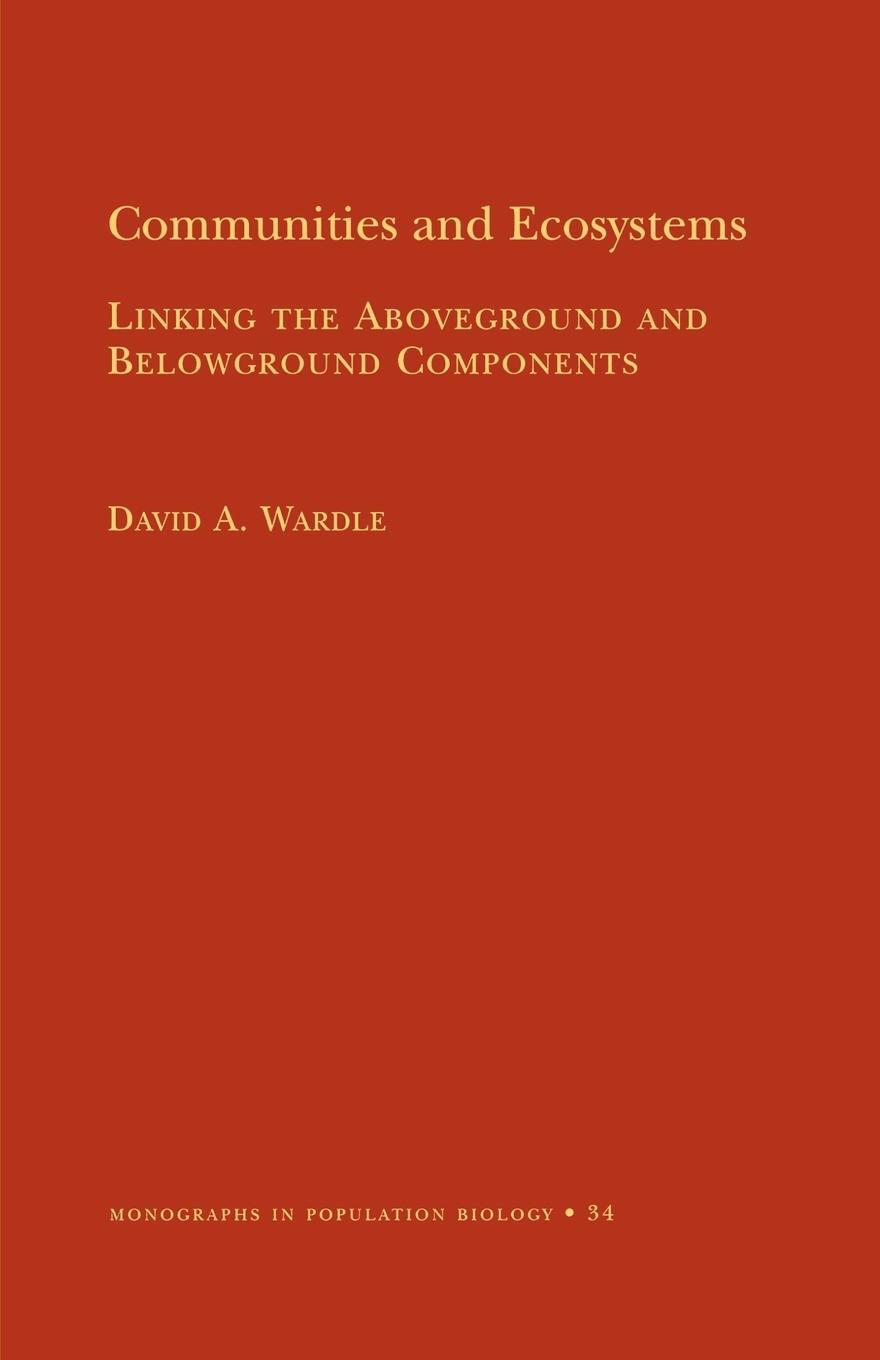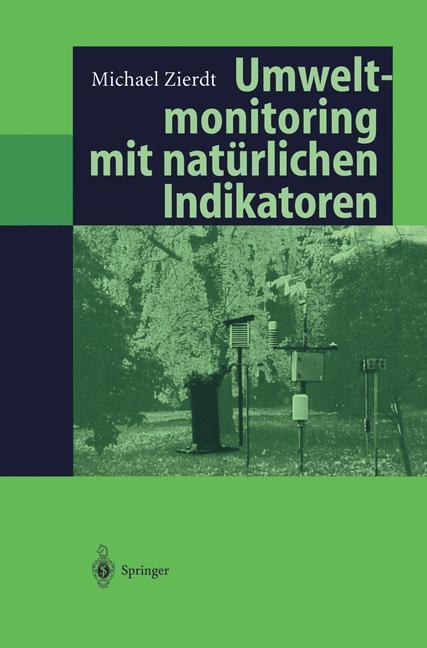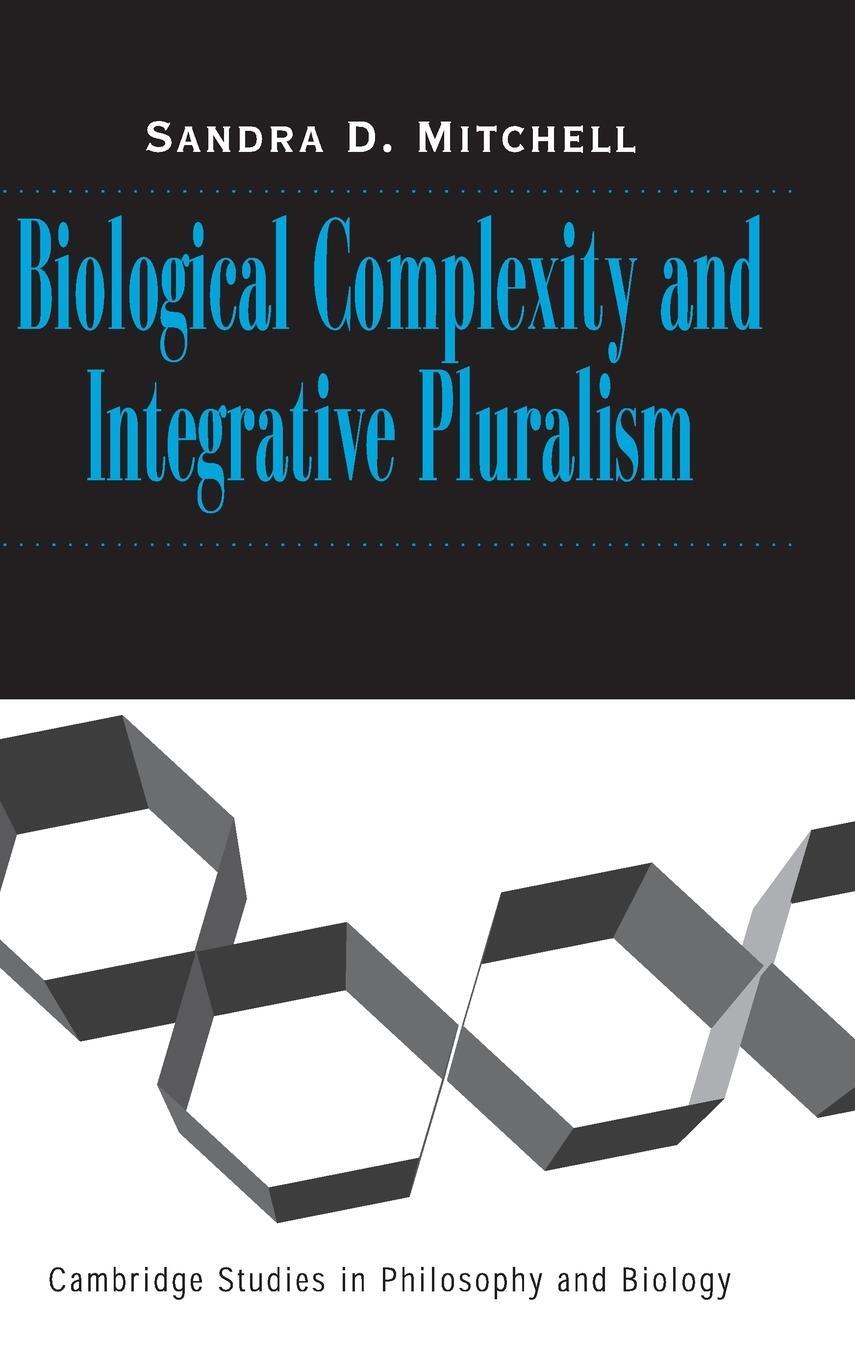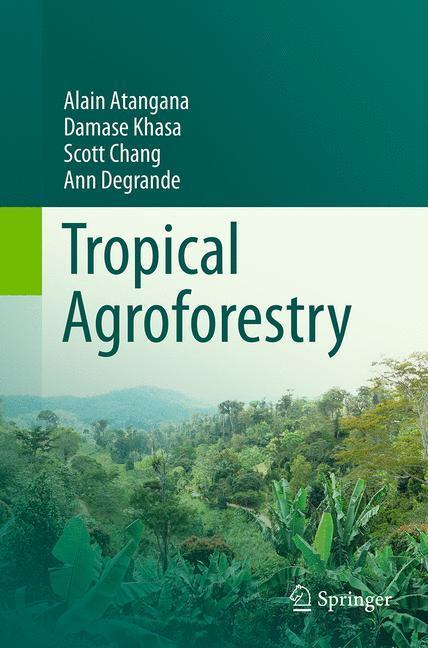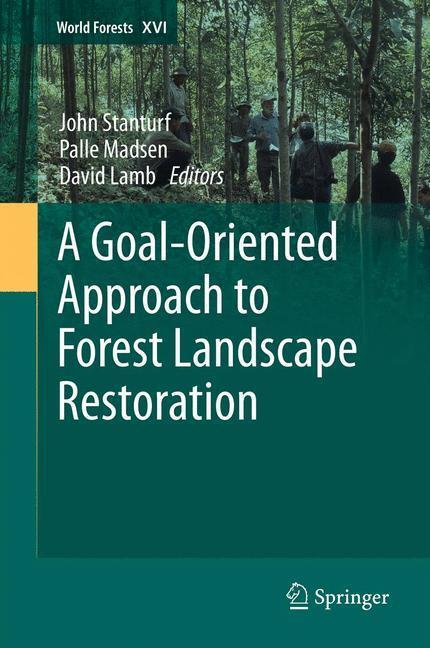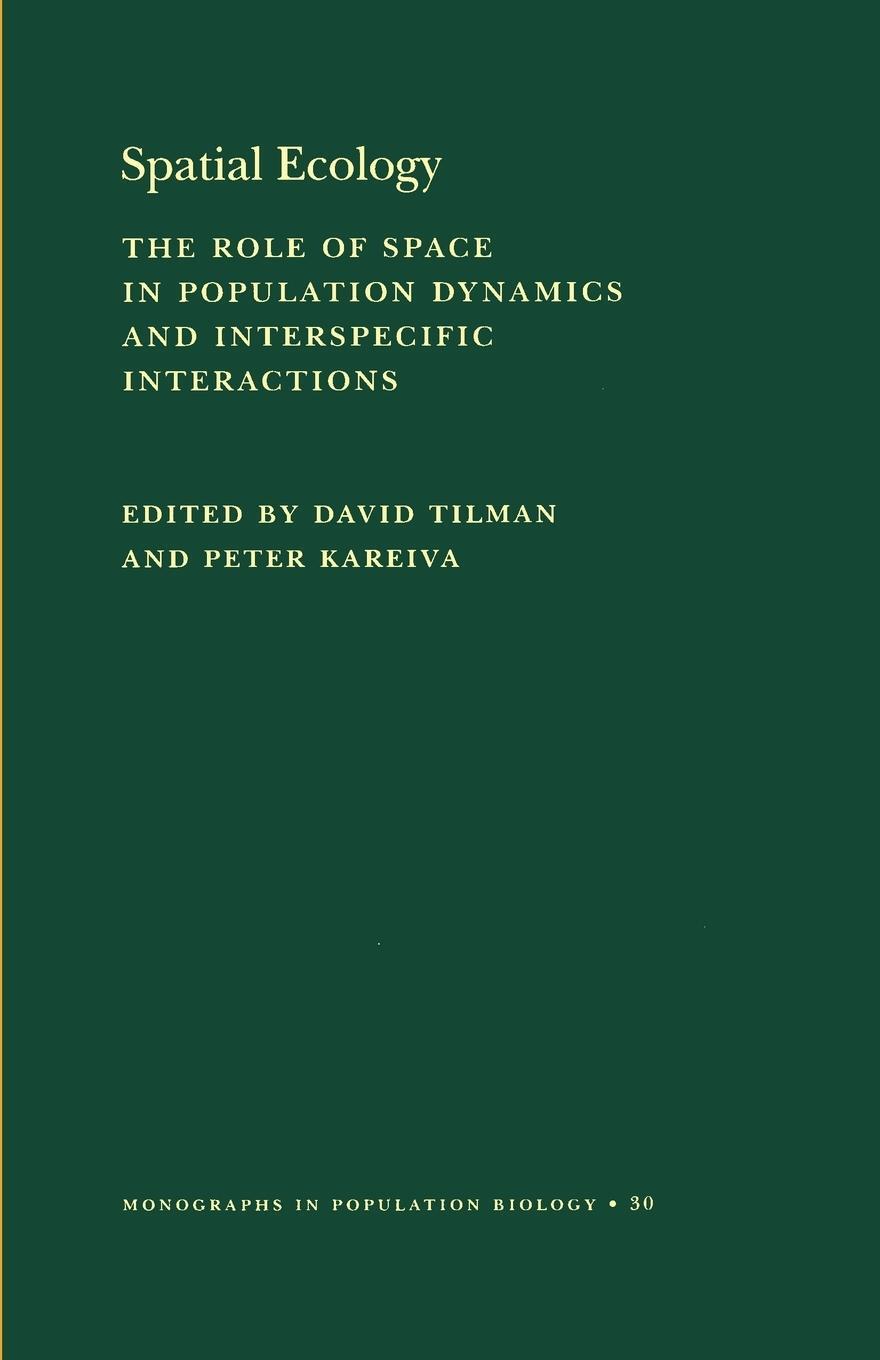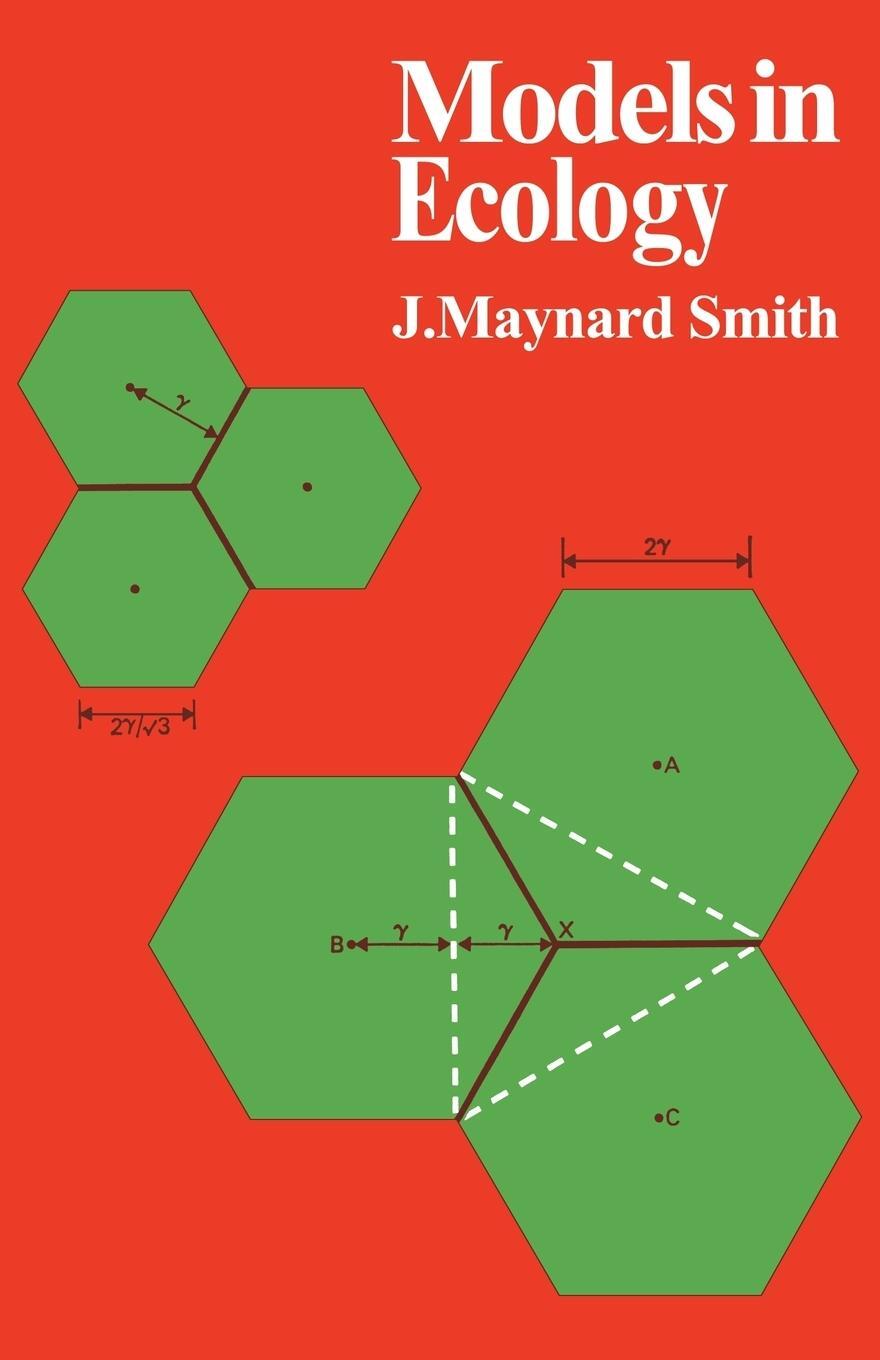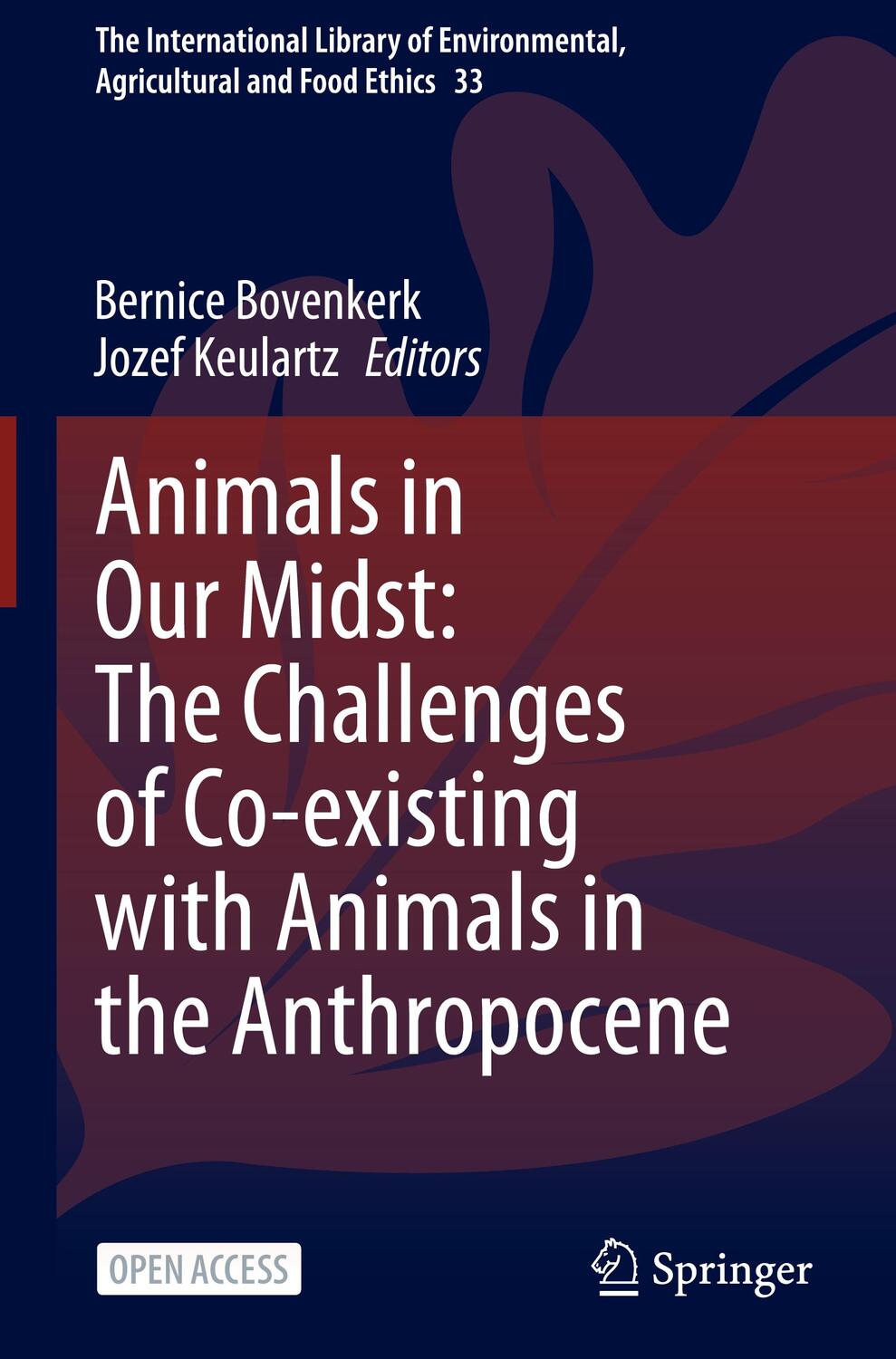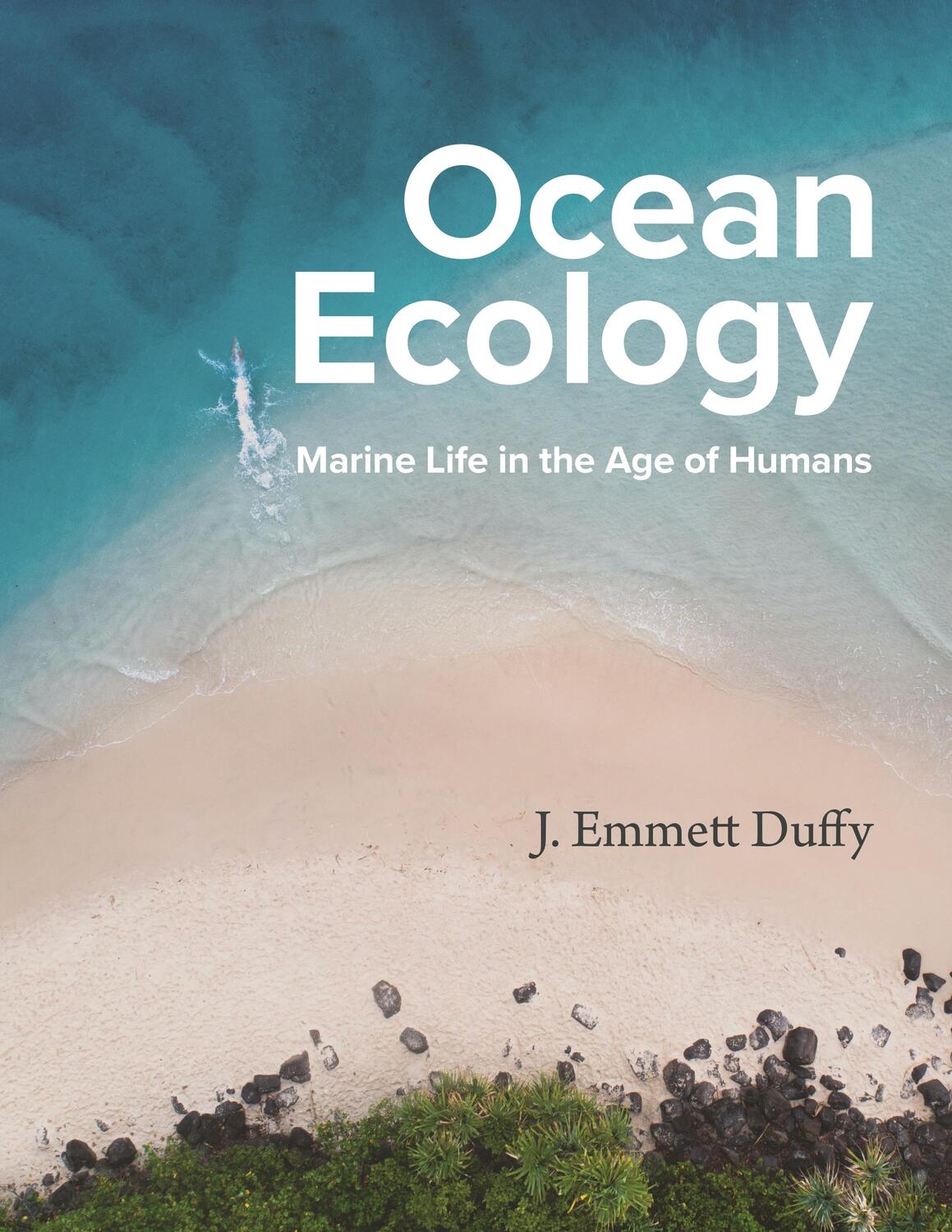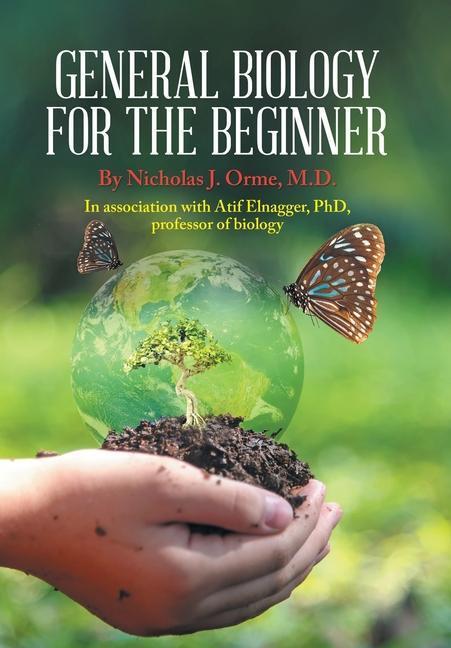Dekorationsartikel gehören nicht zum Leistungsumfang.
Sprache:
Englisch
79,40 €*
Versandkostenfrei per Post / DHL
Lieferzeit 1-2 Wochen
Kategorien:
Beschreibung
Most of the earth's terrestrial species live in the soil. These organisms, which include many thousands of species of fungi and nematodes, shape aboveground plant and animal life as well as our climate and atmosphere. Indeed, all terrestrial ecosystems consist of interdependent aboveground and belowground compartments. Despite this, aboveground and belowground ecology have been conducted largely in isolation. This book represents the first major synthesis to focus explicitly on the connections between aboveground and belowground subsystems--and their importance for community structure and ecosystem functioning.
David Wardle integrates a vast body of literature from numerous fields--including population ecology, ecosystem ecology, ecophysiology, ecological theory, soil science, and global-change biology--to explain the key conceptual issues relating to how aboveground and belowground communities affect one another and the processes that each component carries out. He then applies these concepts to a host of critical questions, including the regulation and function of biodiversity as well as the consequences of human-induced global change in the form of biological invasions, extinctions, atmospheric carbon-dioxide enrichment, nitrogen deposition, land-use change, and global warming.
Through ambitious theoretical synthesis and a tremendous range of examples, Wardle shows that the key biotic drivers of community and ecosystem properties involve linkages between aboveground and belowground food webs, biotic interaction, the spatial and temporal dynamics of component organisms, and, ultimately, the ecophysiological traits of those organisms that emerge as ecological drivers. His conclusions will propel theoretical and empirical work throughout ecology.
David Wardle integrates a vast body of literature from numerous fields--including population ecology, ecosystem ecology, ecophysiology, ecological theory, soil science, and global-change biology--to explain the key conceptual issues relating to how aboveground and belowground communities affect one another and the processes that each component carries out. He then applies these concepts to a host of critical questions, including the regulation and function of biodiversity as well as the consequences of human-induced global change in the form of biological invasions, extinctions, atmospheric carbon-dioxide enrichment, nitrogen deposition, land-use change, and global warming.
Through ambitious theoretical synthesis and a tremendous range of examples, Wardle shows that the key biotic drivers of community and ecosystem properties involve linkages between aboveground and belowground food webs, biotic interaction, the spatial and temporal dynamics of component organisms, and, ultimately, the ecophysiological traits of those organisms that emerge as ecological drivers. His conclusions will propel theoretical and empirical work throughout ecology.
Most of the earth's terrestrial species live in the soil. These organisms, which include many thousands of species of fungi and nematodes, shape aboveground plant and animal life as well as our climate and atmosphere. Indeed, all terrestrial ecosystems consist of interdependent aboveground and belowground compartments. Despite this, aboveground and belowground ecology have been conducted largely in isolation. This book represents the first major synthesis to focus explicitly on the connections between aboveground and belowground subsystems--and their importance for community structure and ecosystem functioning.
David Wardle integrates a vast body of literature from numerous fields--including population ecology, ecosystem ecology, ecophysiology, ecological theory, soil science, and global-change biology--to explain the key conceptual issues relating to how aboveground and belowground communities affect one another and the processes that each component carries out. He then applies these concepts to a host of critical questions, including the regulation and function of biodiversity as well as the consequences of human-induced global change in the form of biological invasions, extinctions, atmospheric carbon-dioxide enrichment, nitrogen deposition, land-use change, and global warming.
Through ambitious theoretical synthesis and a tremendous range of examples, Wardle shows that the key biotic drivers of community and ecosystem properties involve linkages between aboveground and belowground food webs, biotic interaction, the spatial and temporal dynamics of component organisms, and, ultimately, the ecophysiological traits of those organisms that emerge as ecological drivers. His conclusions will propel theoretical and empirical work throughout ecology.
David Wardle integrates a vast body of literature from numerous fields--including population ecology, ecosystem ecology, ecophysiology, ecological theory, soil science, and global-change biology--to explain the key conceptual issues relating to how aboveground and belowground communities affect one another and the processes that each component carries out. He then applies these concepts to a host of critical questions, including the regulation and function of biodiversity as well as the consequences of human-induced global change in the form of biological invasions, extinctions, atmospheric carbon-dioxide enrichment, nitrogen deposition, land-use change, and global warming.
Through ambitious theoretical synthesis and a tremendous range of examples, Wardle shows that the key biotic drivers of community and ecosystem properties involve linkages between aboveground and belowground food webs, biotic interaction, the spatial and temporal dynamics of component organisms, and, ultimately, the ecophysiological traits of those organisms that emerge as ecological drivers. His conclusions will propel theoretical and empirical work throughout ecology.
Über den Autor
David A. Wardle
Inhaltsverzeichnis
Acknowledgments vii
Chapter 1: Introduction 1
Chapter 2: The Soil Food Web: Biotic Interactions and Regulators 7
Controls: Top Down, Bottom Up, and Productivity 9
Regulation by Resources and Predation in Soil Food Webs 16
Litter Transformers, Ecosystem Engineers, and Mutualisms 37
The Functionality of Soil Food Webs 43
Stability and Temporal Variability 48
Synthesis 53
Chapter 3: Plant Species Control of Soil Biota and Processes 56
Plant Species Effects on Soil Biota 57
Links among Plant Species, Soil Biota, and Soil Processes 68
Temporal and Spatial Variability 73
Plant Traits, Strategies, and Ecophysiological Constraints 83
Soil Biotic Responses to Vegetation Succession 97
Synthesis 103
Chapter 4: Belowground Consequences of Aboveground Food Web Interactions 105
Individual Plant Effects 106
Dung and Urine Return 114
Effects of Palatability Differences among Plant Species 117
Spatial and Temporal Variability 130
Consequences of Predation of Herbivores 132
Transport of Resources by Aboveground Consumers 134
Synthesis 136
Chapter 5: Completing the Circle: How Soil Food Web Effects Are Manifested Aboveground 138
The Decomposer Food Web 140
Nitrogen Transformations 152
Microbial Associates of Plant Roots 157
Root Herbivores 169
Physical Effects of Soil Biota 173
Soil Biotic Effects on Aboveground Food Webs 175
Synthesis 181
Chapter 6: The Regulation and Function of Biological Diversity 183
Assessment of Soil Diversity 184
Stress and Disturbance as Controls of Soil Diversity 187
Biotic Controls of Diversity 194
The Enigma of Soil Diversity 203
Diversity of Soil Organisms over Larger Spatial Scales 205
Biodiversity and Ecosystem Function 209
Synthesis 236
Chapter 7: Global Change Phenomena in an Aboveground-Belowground Context 239
Species Losses and Gains 240
Land Use Changes 253
Carbon Dioxide Enrichment and Nitrogen Deposition 265
Global Climate Change 281
Synthesis 292
Chapter 8: Underlying Themes 295
References 309
Index 387
Chapter 1: Introduction 1
Chapter 2: The Soil Food Web: Biotic Interactions and Regulators 7
Controls: Top Down, Bottom Up, and Productivity 9
Regulation by Resources and Predation in Soil Food Webs 16
Litter Transformers, Ecosystem Engineers, and Mutualisms 37
The Functionality of Soil Food Webs 43
Stability and Temporal Variability 48
Synthesis 53
Chapter 3: Plant Species Control of Soil Biota and Processes 56
Plant Species Effects on Soil Biota 57
Links among Plant Species, Soil Biota, and Soil Processes 68
Temporal and Spatial Variability 73
Plant Traits, Strategies, and Ecophysiological Constraints 83
Soil Biotic Responses to Vegetation Succession 97
Synthesis 103
Chapter 4: Belowground Consequences of Aboveground Food Web Interactions 105
Individual Plant Effects 106
Dung and Urine Return 114
Effects of Palatability Differences among Plant Species 117
Spatial and Temporal Variability 130
Consequences of Predation of Herbivores 132
Transport of Resources by Aboveground Consumers 134
Synthesis 136
Chapter 5: Completing the Circle: How Soil Food Web Effects Are Manifested Aboveground 138
The Decomposer Food Web 140
Nitrogen Transformations 152
Microbial Associates of Plant Roots 157
Root Herbivores 169
Physical Effects of Soil Biota 173
Soil Biotic Effects on Aboveground Food Webs 175
Synthesis 181
Chapter 6: The Regulation and Function of Biological Diversity 183
Assessment of Soil Diversity 184
Stress and Disturbance as Controls of Soil Diversity 187
Biotic Controls of Diversity 194
The Enigma of Soil Diversity 203
Diversity of Soil Organisms over Larger Spatial Scales 205
Biodiversity and Ecosystem Function 209
Synthesis 236
Chapter 7: Global Change Phenomena in an Aboveground-Belowground Context 239
Species Losses and Gains 240
Land Use Changes 253
Carbon Dioxide Enrichment and Nitrogen Deposition 265
Global Climate Change 281
Synthesis 292
Chapter 8: Underlying Themes 295
References 309
Index 387
Details
| Erscheinungsjahr: | 2002 |
|---|---|
| Fachbereich: | Allgemeines |
| Genre: | Biologie |
| Rubrik: | Naturwissenschaften & Technik |
| Thema: | Lexika |
| Medium: | Taschenbuch |
| Seiten: | 402 |
| ISBN-13: | 9780691074870 |
| ISBN-10: | 0691074879 |
| Sprache: | Englisch |
| Ausstattung / Beilage: | Paperback |
| Einband: | Kartoniert / Broschiert |
| Autor: | Wardle, David A. |
| Hersteller: | Princeton University Press |
| Maße: | 216 x 140 x 24 mm |
| Von/Mit: | David A. Wardle |
| Erscheinungsdatum: | 12.05.2002 |
| Gewicht: | 0,565 kg |
Über den Autor
David A. Wardle
Inhaltsverzeichnis
Acknowledgments vii
Chapter 1: Introduction 1
Chapter 2: The Soil Food Web: Biotic Interactions and Regulators 7
Controls: Top Down, Bottom Up, and Productivity 9
Regulation by Resources and Predation in Soil Food Webs 16
Litter Transformers, Ecosystem Engineers, and Mutualisms 37
The Functionality of Soil Food Webs 43
Stability and Temporal Variability 48
Synthesis 53
Chapter 3: Plant Species Control of Soil Biota and Processes 56
Plant Species Effects on Soil Biota 57
Links among Plant Species, Soil Biota, and Soil Processes 68
Temporal and Spatial Variability 73
Plant Traits, Strategies, and Ecophysiological Constraints 83
Soil Biotic Responses to Vegetation Succession 97
Synthesis 103
Chapter 4: Belowground Consequences of Aboveground Food Web Interactions 105
Individual Plant Effects 106
Dung and Urine Return 114
Effects of Palatability Differences among Plant Species 117
Spatial and Temporal Variability 130
Consequences of Predation of Herbivores 132
Transport of Resources by Aboveground Consumers 134
Synthesis 136
Chapter 5: Completing the Circle: How Soil Food Web Effects Are Manifested Aboveground 138
The Decomposer Food Web 140
Nitrogen Transformations 152
Microbial Associates of Plant Roots 157
Root Herbivores 169
Physical Effects of Soil Biota 173
Soil Biotic Effects on Aboveground Food Webs 175
Synthesis 181
Chapter 6: The Regulation and Function of Biological Diversity 183
Assessment of Soil Diversity 184
Stress and Disturbance as Controls of Soil Diversity 187
Biotic Controls of Diversity 194
The Enigma of Soil Diversity 203
Diversity of Soil Organisms over Larger Spatial Scales 205
Biodiversity and Ecosystem Function 209
Synthesis 236
Chapter 7: Global Change Phenomena in an Aboveground-Belowground Context 239
Species Losses and Gains 240
Land Use Changes 253
Carbon Dioxide Enrichment and Nitrogen Deposition 265
Global Climate Change 281
Synthesis 292
Chapter 8: Underlying Themes 295
References 309
Index 387
Chapter 1: Introduction 1
Chapter 2: The Soil Food Web: Biotic Interactions and Regulators 7
Controls: Top Down, Bottom Up, and Productivity 9
Regulation by Resources and Predation in Soil Food Webs 16
Litter Transformers, Ecosystem Engineers, and Mutualisms 37
The Functionality of Soil Food Webs 43
Stability and Temporal Variability 48
Synthesis 53
Chapter 3: Plant Species Control of Soil Biota and Processes 56
Plant Species Effects on Soil Biota 57
Links among Plant Species, Soil Biota, and Soil Processes 68
Temporal and Spatial Variability 73
Plant Traits, Strategies, and Ecophysiological Constraints 83
Soil Biotic Responses to Vegetation Succession 97
Synthesis 103
Chapter 4: Belowground Consequences of Aboveground Food Web Interactions 105
Individual Plant Effects 106
Dung and Urine Return 114
Effects of Palatability Differences among Plant Species 117
Spatial and Temporal Variability 130
Consequences of Predation of Herbivores 132
Transport of Resources by Aboveground Consumers 134
Synthesis 136
Chapter 5: Completing the Circle: How Soil Food Web Effects Are Manifested Aboveground 138
The Decomposer Food Web 140
Nitrogen Transformations 152
Microbial Associates of Plant Roots 157
Root Herbivores 169
Physical Effects of Soil Biota 173
Soil Biotic Effects on Aboveground Food Webs 175
Synthesis 181
Chapter 6: The Regulation and Function of Biological Diversity 183
Assessment of Soil Diversity 184
Stress and Disturbance as Controls of Soil Diversity 187
Biotic Controls of Diversity 194
The Enigma of Soil Diversity 203
Diversity of Soil Organisms over Larger Spatial Scales 205
Biodiversity and Ecosystem Function 209
Synthesis 236
Chapter 7: Global Change Phenomena in an Aboveground-Belowground Context 239
Species Losses and Gains 240
Land Use Changes 253
Carbon Dioxide Enrichment and Nitrogen Deposition 265
Global Climate Change 281
Synthesis 292
Chapter 8: Underlying Themes 295
References 309
Index 387
Details
| Erscheinungsjahr: | 2002 |
|---|---|
| Fachbereich: | Allgemeines |
| Genre: | Biologie |
| Rubrik: | Naturwissenschaften & Technik |
| Thema: | Lexika |
| Medium: | Taschenbuch |
| Seiten: | 402 |
| ISBN-13: | 9780691074870 |
| ISBN-10: | 0691074879 |
| Sprache: | Englisch |
| Ausstattung / Beilage: | Paperback |
| Einband: | Kartoniert / Broschiert |
| Autor: | Wardle, David A. |
| Hersteller: | Princeton University Press |
| Maße: | 216 x 140 x 24 mm |
| Von/Mit: | David A. Wardle |
| Erscheinungsdatum: | 12.05.2002 |
| Gewicht: | 0,565 kg |
Warnhinweis

